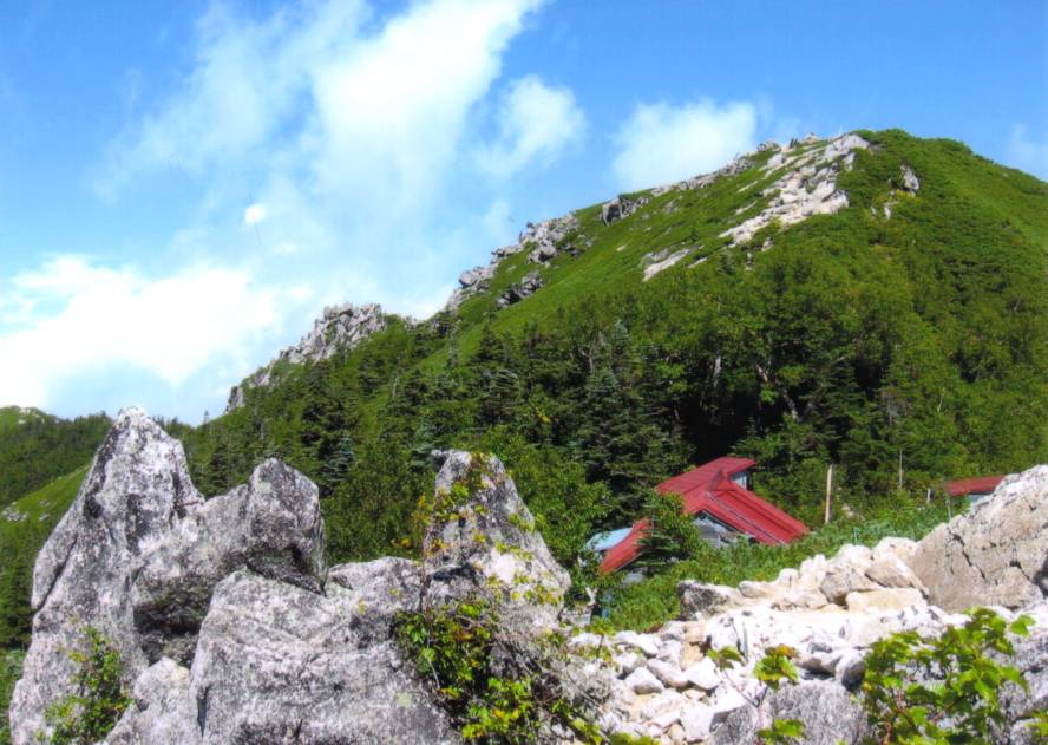
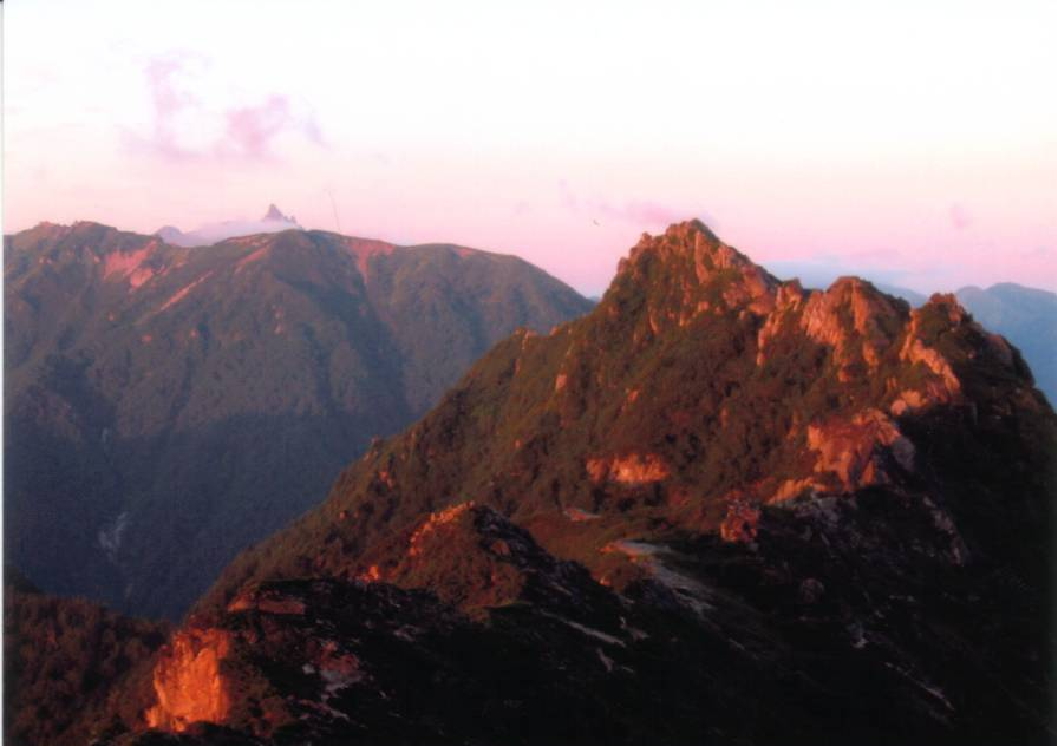
Views of the Northern Japan Alps! Mt. Gakidake Courses
Mt. Gakidake (2,647 m) holds the appeal of an unspoiled solitary peak. The course leading to Mt. Tsubakurodake and Mt. Otenjodake is a mountain trail with various features, such as water, boulder fields, and forests.
1-night, 2-day Higashisawa Nokkoshi Course
Shirasawa trailhead → Mt. Gakidake, Gakidake Goya (hut) (stay) → Mt. Higashisawadake → Higashisawa Nokkoshi (pass) → Nakabusa Hot Springs
This course includes bridges, ladders, and climbing chains. You can also enjoy a little stream climbing on this course. Enjoy the changing views as you proceed along the rocky path. Nakabusa Hot Springs wait at the end of your descent.
2-night, 3-day Mt. Karasawadake Course
Shirasawa trailhead → Mt. Gakidake, Gakidake Goya (hut) (stay) ↔ Mt. Karasawadake, return trip (staying twice at Gakidake Goya (hut))
A return course to Mt. Karasawadake, climbing and descending on the same path. In the flowering season you can enjoy clusters of pink komakusa flowers beside the peaceful mountain path.
2-night, 3-day, Mt. Tsubakurodake Course
Shirasawa trailhead → Mt. Gakidake, Gakidake Goya (hut) (stay) → Mt. Higashisawadake → Mt. Tsubakurodake → Enzanso Hut (stay) → Nakabusa Hot Springs
Of the many mountains that you’ll see on the course towards Mt. Tsubakurodake, Mt Yari in particular looks very large. You can enjoy beautiful scenery as the landscape from Mt. Kita-Tsubakurodake changes to include large granite formations.
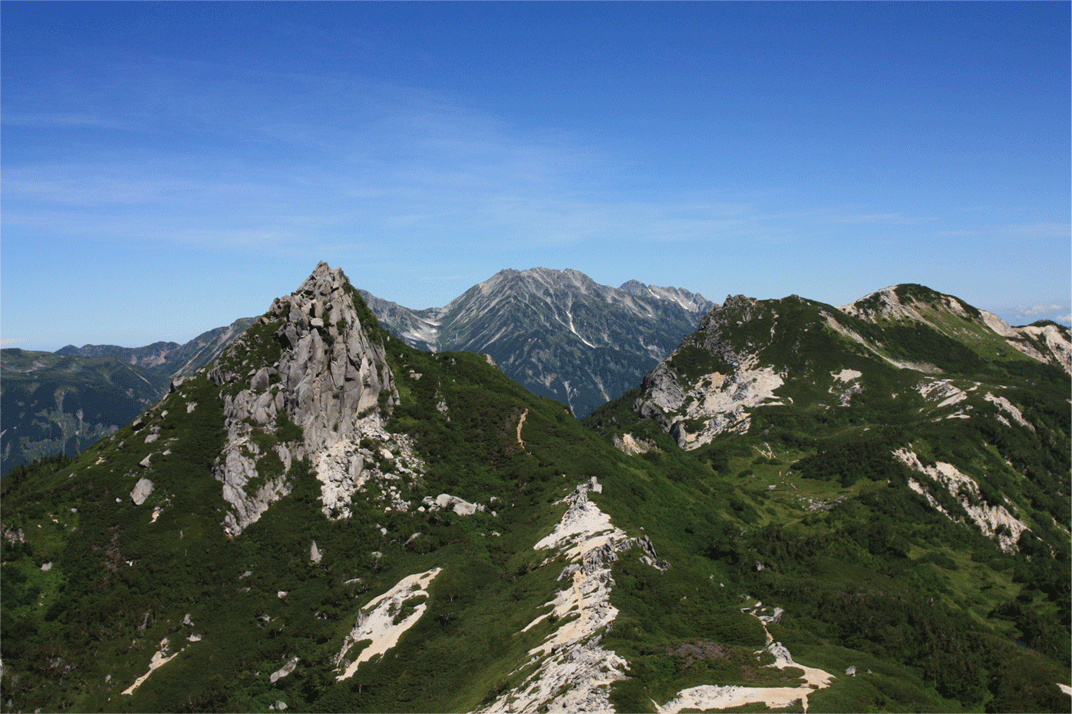
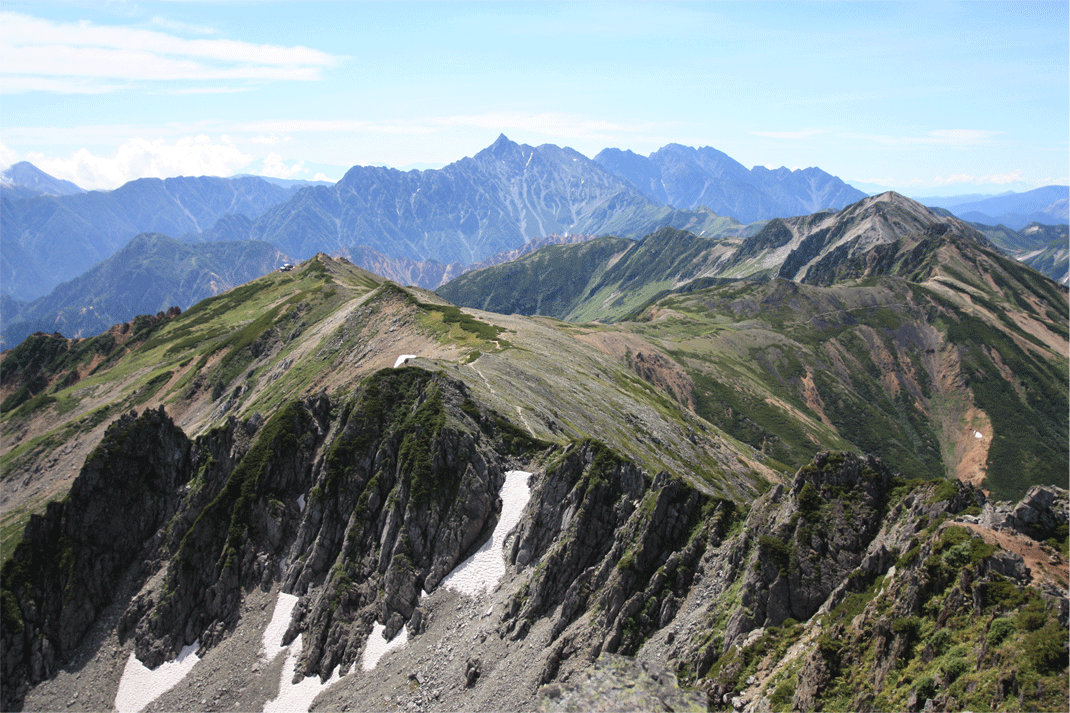
A Rich Variety of Courses Starting from Takase Dam
Every year, many mountaineers enjoy the course starting from Takase Dam up to Bunatate Ridge, and continuing on to Mt. Eboshidake (2,628 m), Mt. Noguchigorodake (2,924 m), and Mt. Mitsumata Rengedake (2,841 m), finally reaching Mt. Yari (3,180 m).
1-night, 2-day Mt. Eboshidake Course
Takase Dam → Mt. Eboshidake → Eboshi Goya (hut) (stay) → Shijuhachiike (ponds), Mt. Minamisawadake → Takase Dam
Clusters of komakusa flowers can be seen on Mt. Minamidake from mid-July. The flowers around Shijuhachi Ponds are in bloom until mid-August, creating a garden above the clouds. The fall foliage of Japanese rowan trees is spectacular.
2-night, 3-day Takase Dam Return Course
Takase Dam → Eboshi Goya (hut) → Noguchigoro Goya (hut) (stay) → Mt. Masagodake → Yumata Hot Springs Seiranso (stay) → Takase Dam
This course has impressive viewpoints of Mt. Yari. You can also see wildflowers such as Aleutian avens. Be sure to leave time to spare for the descent as the slope is long and steep. On the second night you can enjoy a relaxing soak in the hot springs at Seiranso.
3-night, 4-day Mt. Suishodake Course
Takase Dam → Eboshi Goya (hut) (stay) → Suisho Goya (hut) (stay) → Noguchigoro Goya (hut) (stay) → Takase Dam
From this area you can see many of the mountains of the Northern Japan Alps. Famous distant mountains, especially Mt. Fuji, are also visible.
3-night, 4-day Kumonodaira Course
Takase Dam → Eboshi Goya (hut) (stay) → Iwagoke Nokkoshi (pass) → Kumonodaira Sanso (hut) (stay) → Kumonodaira walking → Iwagoke Nokkoshi (pass) → Noguchigoro Goya (hut) (stay) → Takase Dam
Surrounded by mountains, Kumonodaira is the highest wetlands on lava plateau in Japan. Named the “plain of clouds”, you can relax amongst the fields of wildflowers and forget the troubles of the world below. It is known as one of Japan’s last unexplored regions.
3-night, 4-day Ura-Ginza Full Course
Takase Dam → Eboshi Goya (hut) (stay) → Mt. Washibadake → Mitsumata Sanso (hut) (stay) → Kagamidaira Hut (stay) → Shinhotaka Hot Springs
Experience the thrill of the Northern Japan Alps and enjoy the best views of mountains such as Mt. Yari!
3-night, 4-day Mt. Yari Focused Course
Takase Dam → Eboshi Goya (hut) (stay) → Mt. Washibadake → Mitsumata Sanso (hut) (stay) → Sugoroku Hut (stay) → Nishikama ridge → Mt. Yari Hut (stay) → Mt. Yari → Yarisawa → Kamikochi
A full longitudinal traverse of the North Japan Alps with aim of climbing Mt. Yari. With a wealth of changes in scenery and pace, you must be prepared to trek a long distance.
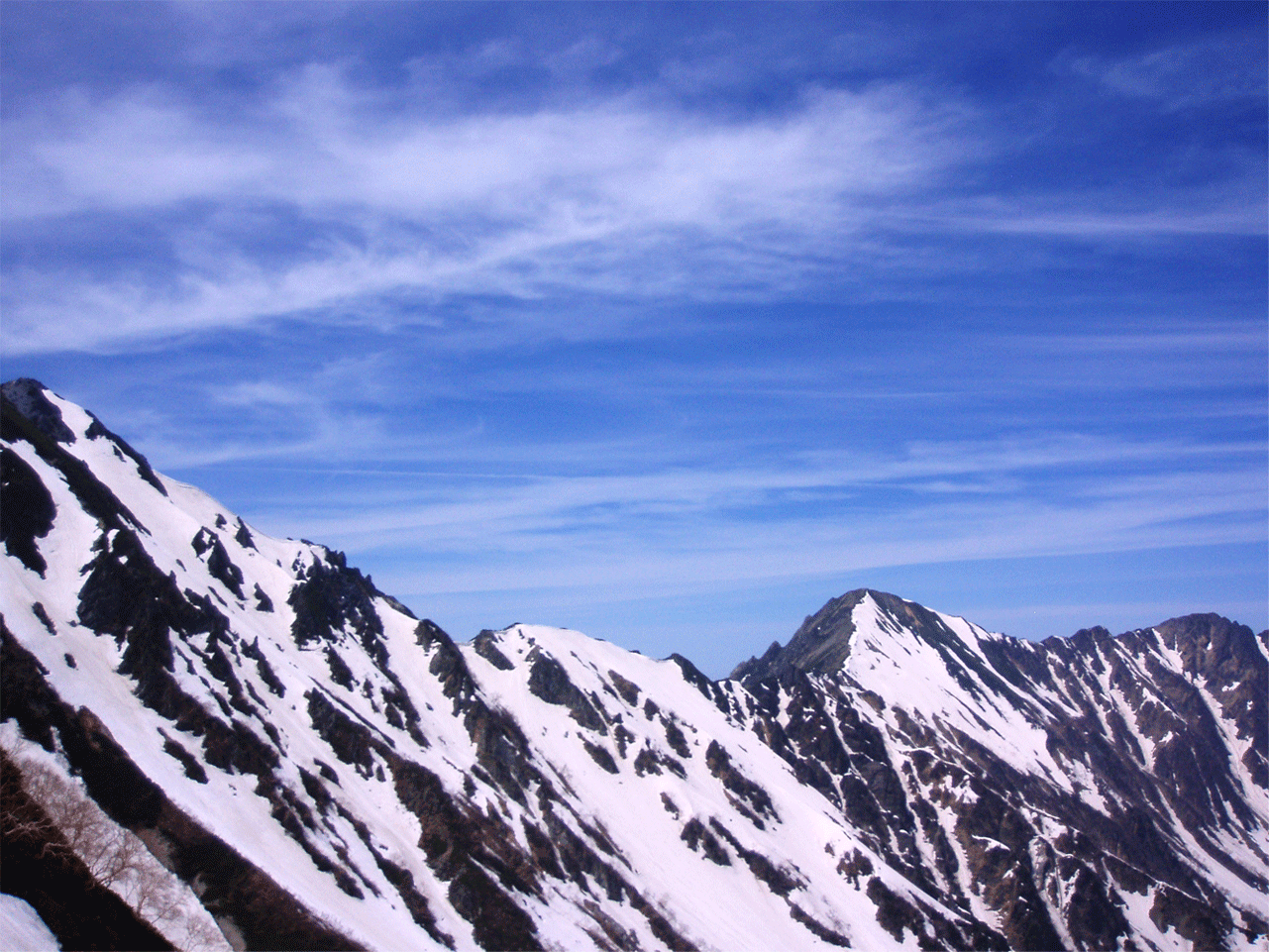
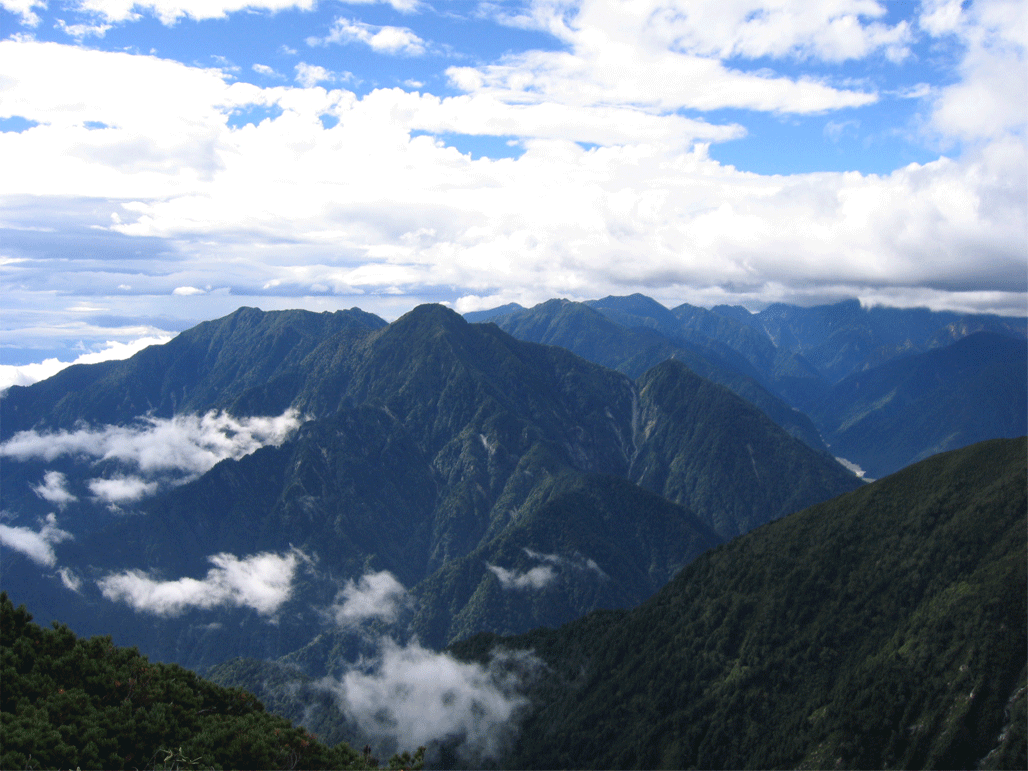
Peaceful Mountain Courses on Which Clusters of Komakusa Flowers Greet You
Mt. Rengedake (2,799 m), famous for having large clusters of komakusa flowers, appears from the center of the city as being the largest mountain with its base spreading wide and gracefully. Also, the course on the ridges leading to Mt. Kitakuzudake (2,551 m) and Funakubo Nokkoshi (pass) is a relatively quiet and relaxing route in the Northern Japan Alps.
2-night, 3-day Harinoki – Shinkoshi – Jigatake round trip from Ogisawa
Ogisawa → Mt. Rengedake, Harinoki Goya (hut) (stay) → Mt. Harinokidake → Mt. Subaridake → Mt. Akasawadake → Mt. Narusawadake → Shinetsu Hut (stay) → Mt Iwagoyasawadake → Mt. Jigatake → Ogisawa
Starting from the trailhead next to Ogisawa station, the 5-hour walk to the Harinoki Pass is cool, even in summer, thanks to the remaining snow. After leaving your pack at the hut, head to Mt. Rengedake. On this course you can enjoy a wealth of alpine plants such as komakusa. After the round trip to Mt. Jigatake, you can enjoy a comfortable descent on a well maintained path.
2-night, 3-day Ogisawa – Funakubo Mountains – Nanakura Course
Ogisawa → Mt. Harinokidake, Harinoki Goya (hut) (stay) → Mt. Rengedake → Mt. Kitakuzudake, Mt. Nanakuradake → Funakubo Goya (hut) (stay) → Nanakura
This course is rich in komakusa flowers. The descending path is long and steep, so proceed slowly and carefully.
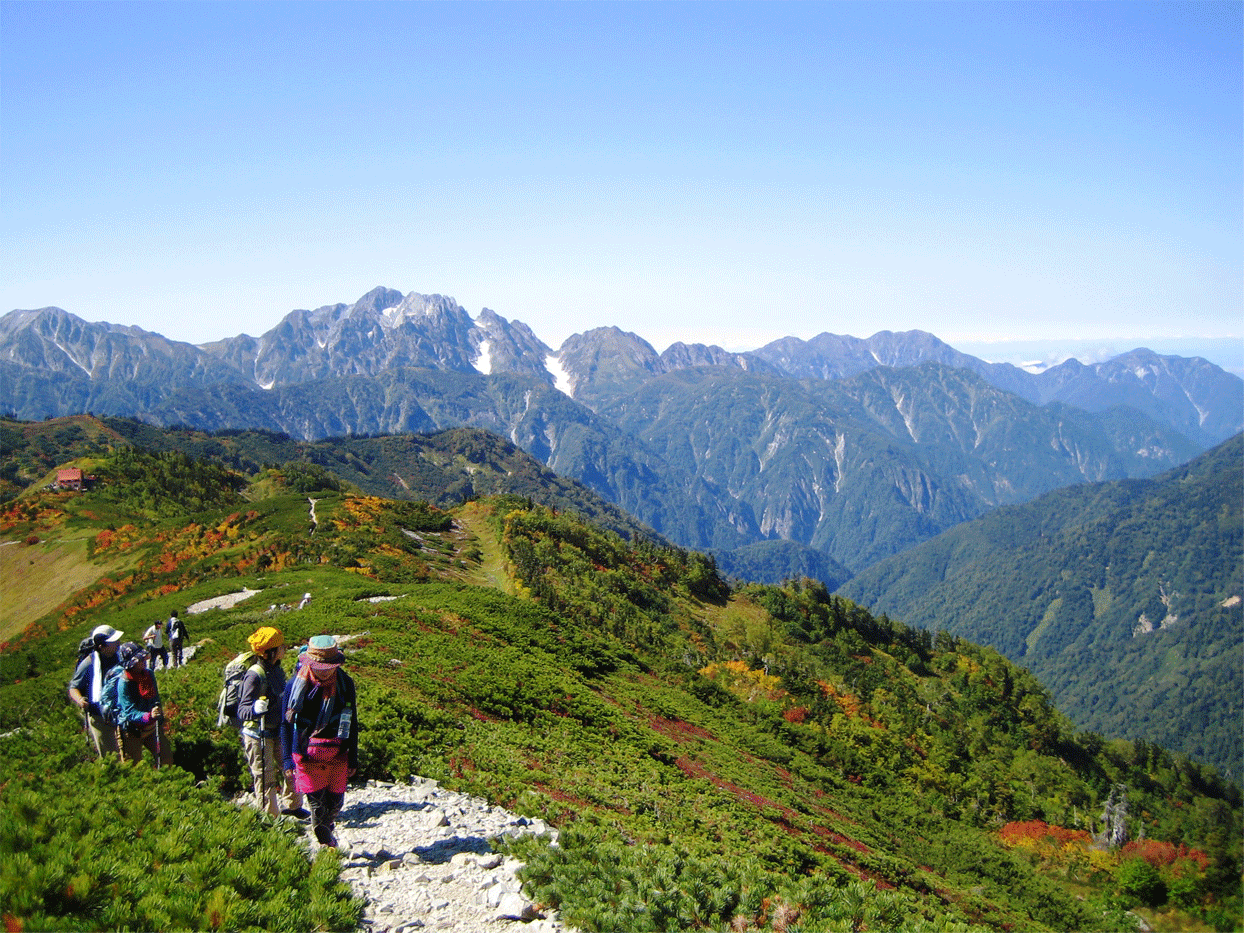
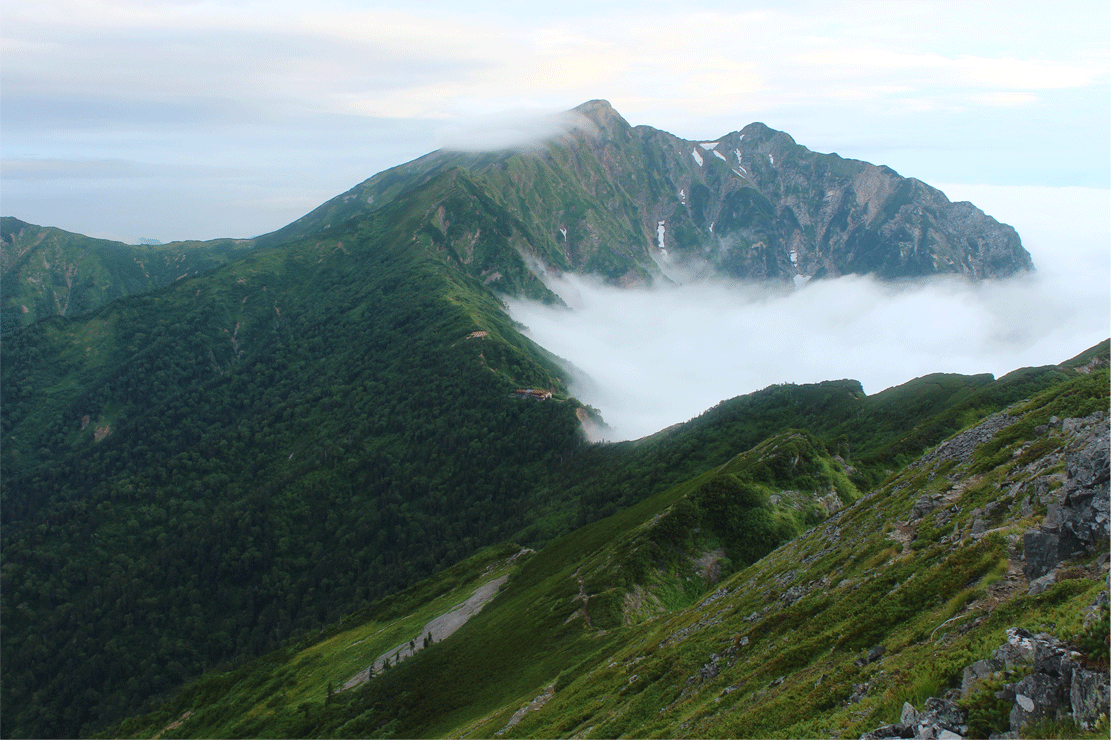
Northern Japan Alps Introductory Course & Mt. Kashimayari Courses
The beloved figure of Mt. Kashimayari’s twin north and south peaks (2,889 m) is represantative of Omachi City.
The course from the Ogisawa Trailhead through Mt. Jigatake (2,670 m), heading to Mt. Kashimayari, is called the Northern Japan Alps Introductory Course and is popular among climbers. Furthermore, climbers can proceed on challenging rock ridges to Mt. Goryudake (2,814 m) as well as to Mt. Karamatsudake and Mt. Hakubadake.
Single-day or 1-night, 2-day Mt. Jigatake round trip – Northern Japan Alps Introductory Course
Ogisawadeai (trailhead) → Mt. Jigatake, Taneike Sanso (hut) (stay) → Ogisawadeai (trailhead)
An introductory course to the Northern Japan Alps. It is possible to complete this course in a single day.
2-night, 3-day Mt. Jigatake – Mt. Kashimayari – Ogisawa Round Trip
Ogisawadeai (trailhead) → Taneike Sanso (hut) → Mt. Jigatake → Tsumetaike Sanso (hut) (stay) → Mt. Kashimayari → Mt. Jigatake → Taneike Sanso (hut) (stay) → Ogisawadeai (trailhead)
A popular course with the aim of climbing Mt. Jigatake and then Mt. Kashimayari. The ridge between Mt. Jigatake and Mt. Kashimayari has fewer dangerous sections than other routes. You can enjoy the alpine plants and outstanding views.
2-night, 3-day Mt. Jigatake – Mt. Kashimayari Akaiwa Ridge Course
Ogisawadeai (trailhead) → Taneike Sanso (hut) (stay) → Mt. Jigatake → Mt. Kashimayari, Tsumetaike Sanso (hut) (stay) → Otanihara
A course descending from the ridgeline. Due to the steep scree slope, it is recommended that, in rainy weather, those less confident on their feet return to Ogisawa from Mt. Kashimayari.
2-night, 3-day Mt. Kashimayari – Mt. Goryudake Intermediate Course
Otanihara → Tsumetaike Sanso (hut) (stay) → Mt. Nunobikidake → Mt. Kashimayari South & North Peaks → Yatsumine Kirret (sharp ridge) → Kirret Hut → Mt. Goryudake → Goryu Hut (stay) → Mt. Shiradake → Mt. Nishitomi → Mt. Otomi → Mt. Kotomi → Jizo no Kashira → Alps-daira Station
A long steep route across the Yatsumine Kirret ridge with many difficult sections.
For more information, see the Omachi Climbing Guides Association website (Japanese).

